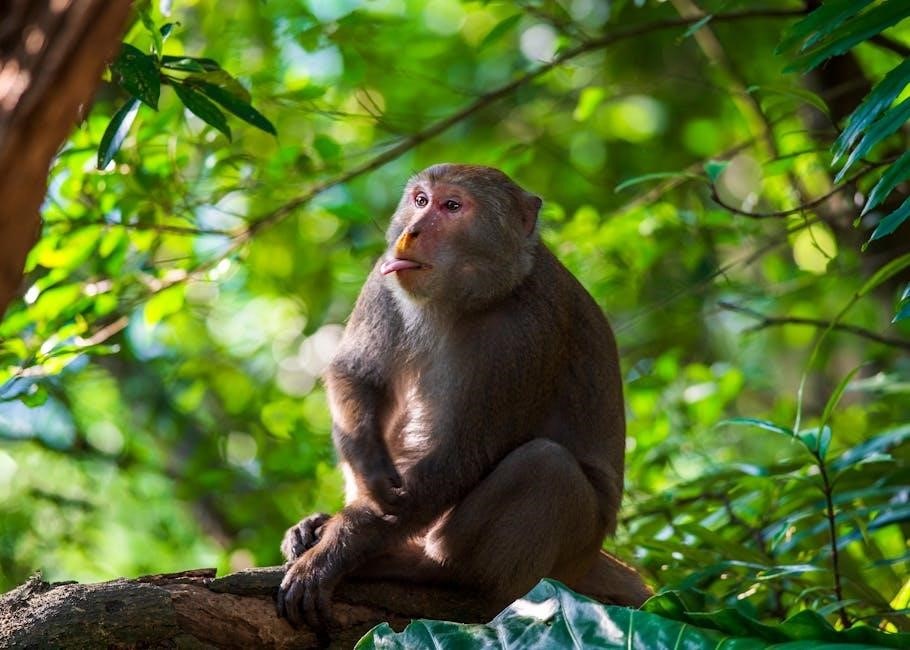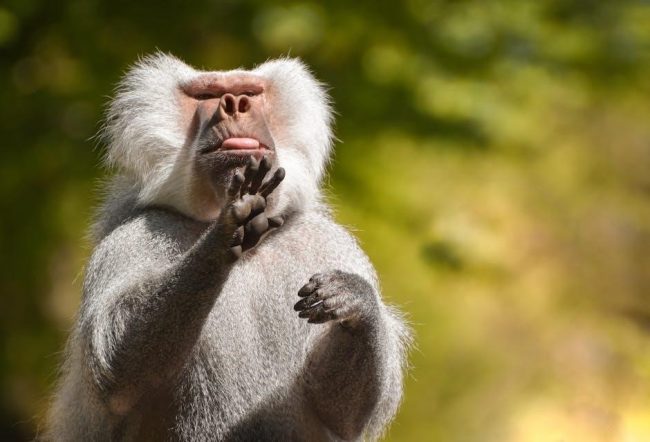Gloria Anzaldúa’s essay How to Tame a Wild Tongue is a powerful exploration of identity, culture, and language. It delves into the struggles of Chicano identity, blending personal narrative with cultural critique.
The essay examines the tension between English and Spanish, highlighting the importance of language in shaping identity. Anzaldúa argues for the preservation of Chicano Spanish as a vital part of cultural heritage.
1.1 Overview of Gloria Anzaldúa’s Essay
Gloria Anzaldúa’s essay How to Tame a Wild Tongue is a poignant exploration of identity, language, and culture. It blends autobiography, history, poetry, and myth to challenge linguistic and cultural norms. The essay, part of her groundbreaking work Borderlands/La Frontera, delves into the struggles of Chicano identity and the politics of language. Anzaldúa recounts her personal experiences with linguistic terrorism and the suppression of Chicano Spanish, arguing for its value as a form of resistance.
She explores the tension between English and Spanish, celebrating the “wild tongue” as a symbol of resilience and cultural pride. The essay remains a powerful critique of linguistic oppression and a celebration of bilingualism.
1.2 Historical Context of Chicano Identity
The historical context of Chicano identity, as explored in How to Tame a Wild Tongue, is rooted in the complex interplay of colonialism, migration, and cultural suppression. The essay highlights the legacy of Spanish colonization and the subsequent imposition of English dominance, which marginalized Chicano Spanish. Anzaldúa traces the evolution of Chicano identity through the Chicano Movement of the 1960s and 70s, emphasizing the community’s struggle for self-definition. Historical events, such as the Mexican-American War and the Treaty of Guadalupe Hidalgo, shaped the borderlands and the hybrid identity of Chicanos. This history of displacement and linguistic suppression forms the backdrop for Anzaldúa’s celebration of resilience and cultural resistance.
1.3 The Significance of Language in Cultural Identity
In How to Tame a Wild Tongue, language emerges as a cornerstone of cultural identity. Anzaldúa argues that language is not merely a tool for communication but a carrier of history, traditions, and selfhood. For Chicanos, the blending of Spanish, English, and indigenous dialects creates a unique linguistic identity that reflects their hybrid heritage. The suppression of Chicano Spanish, often dismissed as “improper” or “inferior,” is seen as an attack on cultural identity. Anzaldúa champions the preservation of this “wild tongue,” asserting its value as a symbol of resistance and a bridge between disparate worlds. Language, in this context, is both a unifying force and a site of struggle.
The Struggle of Chicano Spanish
Chicano Spanish faces oppression and marginalization, often dismissed as inferior. Anzaldúa highlights linguistic terrorism, where dominant languages suppress minority tongues, threatening cultural identity and heritage. Resilience persists.
2.1 The Evolution of Chicano Spanish
Chicano Spanish emerged as a unique blend of Spanish and English, shaped by the cultural and historical experiences of Chicanos in the U.S.-Mexico borderlands. Rooted in Mexican Spanish, it evolved through generations of linguistic adaptation. The dialect incorporates English loanwords and distinct grammatical shifts, reflecting the hybridity of Chicano identity. Historical events, such as the loss of land after the Mexican-American War, accelerated its development. Chicano Spanish became a tool for resistance, preserving cultural ties while adapting to a changing environment. Its evolution underscores the resilience of a community navigating linguistic and cultural borders, making it a vital part of Chicano heritage and identity.
2.2 Linguistic Terrorism and Its Impact
Linguistic terrorism refers to the systemic suppression of minority languages, often imposed by dominant cultures to erase cultural identities. In How to Tame a Wild Tongue, Anzaldúa highlights how Chicano Spanish is demeaned and marginalized, forcing individuals to abandon their native tongue. This linguistic oppression leads to internalized shame, eroding self-esteem and cultural connection. The impact extends beyond language, affecting mental health and societal inclusion. By devaluing Chicano Spanish, linguistic terrorism enforces cultural homogenization, silencing diverse voices and perpetuating inequality. Anzaldúa argues that resisting this oppression is crucial for preserving identity and fostering resilience.
2.3 The Role of Language in Preserving Culture
Language serves as a vital vessel for cultural preservation, carrying traditions, histories, and communal identities. In How to Tame a Wild Tongue, Anzaldúa emphasizes that Chicano Spanish embodies the collective memory and resilience of its speakers. Without language, cultural identity erodes, disconnecting communities from their heritage. Language preservation ensures the survival of cultural practices, stories, and values, fostering a sense of belonging. For Chicanos, maintaining their unique Spanish dialect resists cultural erasure and honors their roots. Thus, language is not just a means of communication but a cornerstone of cultural continuity and resistance against assimilation.

The Concept of the “Wild Tongue”
The “Wild Tongue” symbolizes resistance against linguistic oppression and cultural erasure. It embodies the resilience of Chicano Spanish, blending English and Spanish to challenge societal norms and preserve identity.
3.1 Defining the “Wild Tongue” in Anzaldúa’s Work
In Gloria Anzaldúa’s essay, the “Wild Tongue” refers to the hybrid language spoken by Chicanos, blending Spanish, English, and indigenous dialects. It symbolizes resistance against linguistic oppression and cultural erasure. Anzaldúa defines it as a form of resilience, rejecting the suppression of Chicano Spanish. The “Wild Tongue” embodies the duality of identity, challenging dominant narratives that seek to homogenize language and culture. It is not a single tongue but a complex interplay of voices, reflecting the borderlands of identity. Anzaldúa celebrates this linguistic duality as a source of strength, asserting that it cannot be tamed or silenced but must be embraced as a vital part of Chicano heritage.
3.2 The Power of Language as a Tool of Resistance
Gloria Anzaldúa portrays language as a powerful tool of resistance against cultural erasure and oppression. In “How to Tame a Wild Tongue,” she emphasizes how Chicano Spanish, despite its hybridity, serves as a form of defiance. By refusing to conform to standard English or Spanish, Chicanos reclaim their identity and challenge dominant narratives. Anzaldúa’s work highlights how language can be both a weapon and a shield, preserving cultural heritage while resisting assimilation. She argues that the “Wild Tongue” embodies resilience, allowing individuals to navigate the borderlands of identity and assert their presence in the face of marginalization and linguistic suppression.

3.3 The Tension Between English and Spanish
Gloria Anzaldúa’s essay vividly captures the tension between English and Spanish, reflecting the broader struggles of Chicano identity. English is often imposed as the dominant language, marginalizing Spanish and Chicano Spanish dialects. Anzaldúa argues that this linguistic hierarchy perpetuates cultural erasure and oppression. She rejects the notion that one language must prevail, instead embracing the hybridity of Chicano Spanish as a form of resistance. The “Wild Tongue” symbolizes the resilience of a culture that refuses to be silenced or assimilated. By celebrating bilingualism, Anzaldúa challenges the dominance of English and affirms the value of preserving linguistic diversity as a means of cultural survival and empowerment.
The Politics of Language and Identity
Language serves as a tool of power, often suppressing minority voices. Chicano Spanish is marginalized, yet its preservation is an act of resistance, affirming cultural identity and challenging linguistic dominance.
4.1 Language as a Marker of Identity
Language is deeply intertwined with identity, serving as a reflection of cultural heritage and personal history. In Gloria Anzaldúa’s work, Chicano Spanish is portrayed as a unique marker of identity, blending elements from both Spanish and English. This hybrid language, often marginalized, becomes a symbol of resistance and resilience. Anzaldúa emphasizes how language shapes self-perception and belonging, particularly for Chicano individuals navigating multiple cultural spaces. The preservation of this linguistic identity is not just about communication but about asserting one’s place within a broader societal context that frequently seeks to erase or homogenize diverse voices. Language, thus, becomes a powerful tool for self-definition and cultural preservation.
4.2 The Marginalization of Chicano Spanish
Chicano Spanish is often stigmatized, viewed as inferior to standard Spanish or English, perpetuating its marginalization. This rejection stems from historical colonization and cultural domination, where indigenous and mestizo languages were suppressed. The devaluation of Chicano Spanish reflects broader societal biases against Chicano culture. Internalized oppression leads some Chicanos to reject their native tongue, associating it with shame or backwardness. Educational systems often dismiss Chicano Spanish, reinforcing its exclusion from formal spaces. This marginalization extends to media and literature, further erasing its legitimacy; Anzaldúa argues that reclaiming Chicano Spanish is essential to resisting cultural erasure and affirming Chicano identity, challenging dominant linguistic norms that devalue hybrid languages. Language marginalization thus mirrors the broader struggle for Chicano self-acceptance and cultural preservation.
4.3 The Importance of Bilingualism
Gloria Anzaldúa emphasizes bilingualism as a vital tool for resistance and cultural preservation. For Chicanos, speaking both English and Spanish represents the blending of worlds, allowing individuals to navigate multiple cultural spaces. Bilingualism fosters a deeper connection to heritage while enabling communication across borders. It challenges the dominance of monolingual norms, asserting the validity of hybrid identities. Anzaldúa argues that bilingualism is not merely practical but emotionally and cognitively enriching, offering a broader perspective on identity and experience. By embracing bilingualism, individuals resist linguistic and cultural erasure, affirming their right to exist in a multicultural world. This duality is both a survival strategy and a source of pride.

Personal and Collective Identity in the Essay
Anzaldúa intertwines personal and collective identity through language, culture, and resistance. Her autobiographical narrative reflects the Chicano experience, blending individual struggle with communal resilience and cultural pride.
5.1 Autobiographical Elements in the Essay
Gloria Anzaldúa’s essay How to Tame a Wild Tongue is deeply personal, weaving autobiographical elements to illustrate her journey of self-discovery and cultural identity. She recounts childhood memories of being shamed for speaking Chicano Spanish, reflecting the broader struggles of her community. Anzaldúa shares intimate details about her relationship with language, from her mother’s influence to her experiences in school and societal pressures. These personal narratives serve as a bridge, connecting her individual story to the collective Chicano experience. By blending autobiography with historical and cultural critique, Anzaldúa creates a powerful narrative that resonates with readers on both personal and communal levels.
5.2 The Intersection of Gender, Sexuality, and Language
Gloria Anzaldúa’s essay intertwines gender, sexuality, and language, revealing how these identities are policed and marginalized. She explores how societal norms impose silence on women and queer individuals, often through language. Anzaldúa’s experiences as a Chicana lesbian underscore the layered oppression faced by those at the intersection of race, gender, and sexuality.
Language becomes a tool of resistance, allowing Anzaldúa to reclaim her identity. She challenges the erasure of queer voices within Chicano culture and advocates for a language that embraces diversity. By voicing her own marginalized identity, Anzaldúa creates space for others to do the same, highlighting the power of language in liberation.
5.3 The Role of Community in Shaping Identity
Gloria Anzaldúa emphasizes the vital role of community in shaping identity, particularly for marginalized groups. Shared language, traditions, and cultural practices bind individuals together, fostering a sense of belonging. Community serves as a source of validation and strength, counteracting societal erasure and oppression.
Through collective identity, individuals find the courage to resist assimilation and reclaim their heritage. Anzaldúa highlights how community resilience challenges dominant narratives, preserving cultural integrity. This shared foundation empowers individuals to navigate intersecting identities and assert their presence in a world that often seeks to silence them.

The Role of Education and Society
Education and societal norms significantly influence language use and cultural identity. Institutions often suppress minority languages, perpetuating linguistic terrorism and cultural erasure. Anzaldúa critiques these systems for marginalizing Chicano Spanish.
Societal pressures enforce monolingualism, devaluing bilingualism. However, preserving linguistic diversity is essential for cultural survival. Anzaldúa advocates for education that celebrates, rather than eradicates, diverse tongues and identities.
6.1 The Education System’s Impact on Language Use
The education system plays a pivotal role in shaping language use, often suppressing minority languages. In How to Tame a Wild Tongue, Anzaldúa critiques how schools enforce English, marginalizing Spanish and Chicano Spanish. This systemic erasure leads to internalized racism and linguistic shame, as students are punished for speaking their native tongues. The classroom becomes a space where cultural identity is stripped away, leaving students alienated from their heritage. Anzaldúa highlights how this linguistic suppression perpetuates inequality, emphasizing the need for educational systems to value and preserve linguistic diversity rather than enforce monolingualism.
6.2 Societal Pressures and Language Suppression
Societal pressures significantly influence language use, often leading to suppression of minority languages. In How to Tame a Wild Tongue, Anzaldúa highlights how dominant cultures enforce linguistic norms, marginalizing Chicano Spanish. This pressure to conform to standard English or Spanish perpetuates linguistic terrorism, silencing diverse voices. The fear of judgment and rejection forces many to hide their native tongues, leading to internalized racism and cultural erasure. Anzaldúa argues that societal expectations prioritize assimilation over authenticity, eroding cultural identity and self-worth. She emphasizes the need to resist these pressures by embracing linguistic diversity and celebrating the resilience of the “wild tongue.”
6.3 The Importance of Preserving Linguistic Diversity
Preserving linguistic diversity is crucial for maintaining cultural identity and fostering inclusivity. In How to Tame a Wild Tongue, Anzaldúa advocates for the protection of Chicano Spanish, emphasizing its unique cultural value. Language is not just a means of communication but a reflection of history, traditions, and community. The suppression of minority languages often leads to cultural erasure, while their preservation ensures the survival of diverse perspectives. Anzaldúa argues that embracing linguistic diversity challenges dominant narratives and promotes social justice. By valuing all languages, societies can create spaces where marginalized voices are heard and respected, enriching the cultural tapestry for future generations.
Gloria Anzaldúa’s How to Tame a Wild Tongue leaves an enduring influence, celebrating the resilience of Chicano identity and advocating for linguistic justice and cultural preservation.
7.1 The Legacy of “How to Tame a Wild Tongue”
Gloria Anzaldúa’s essay has left a profound legacy, inspiring discussions on identity, language, and culture. It challenges linguistic norms and advocates for cultural preservation, resonating deeply with marginalized communities. The essay’s blend of personal narrative and cultural critique continues to influence contemporary debates on identity and language rights. Its exploration of Chicano Spanish has become a cornerstone in feminist and cultural studies, emphasizing the power of language as a tool of resistance and self-expression. The legacy of “How to Tame a Wild Tongue” remains vital, offering a voice to those navigating the complexities of cultural identity in a globalized world.
7.2 The Relevance of Anzaldúa’s Work Today
Gloria Anzaldúa’s work remains highly relevant today, addressing contemporary issues of identity, language, and cultural diversity. Her exploration of the “wild tongue” resonates with modern discussions on multiculturalism and linguistic rights. The essay’s themes of resistance and self-expression continue to inspire marginalized communities, emphasizing the importance of preserving cultural heritage. Anzaldúa’s critique of linguistic terrorism and her celebration of bilingualism align with current efforts to promote inclusivity and combat discrimination. Her work serves as a powerful reminder of the enduring struggle for linguistic freedom and the importance of embracing diverse voices in an increasingly globalized society. Her legacy endures, influencing new generations of scholars and activists.
7.3 The Continuing Fight for Linguistic Freedom
The fight for linguistic freedom remains a pressing issue, as marginalized communities continue to face suppression of their languages. Anzaldúa’s work highlights the resilience of Chicano Spanish, emphasizing its role in cultural preservation. Efforts to maintain linguistic diversity are crucial in the face of globalization, which often prioritizes dominant languages. Education systems must recognize the value of bilingualism, fostering environments where all languages are respected. The struggle for linguistic freedom is not only about language but also about identity, self-expression, and resistance against systemic oppression. By celebrating diverse tongues, society can move toward inclusivity and true equality, ensuring that no voice is silenced.
